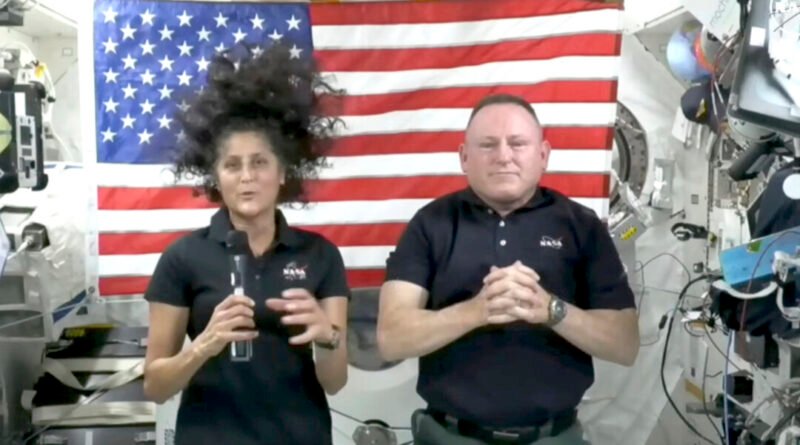Astronauts Have Confidence in Safe Return of Boeing Starliner to Earth
NASA astronaut Barry ‘Butch’ Wilmore expressed his confidence that ‘it will continue’ safely after decades of human spaceflight.
The astronauts leading Boeing’s new Starliner spacecraft’s first crewed flight stated on July 10 that they believe the capsule will ensure their safe return, despite ongoing complications with its propulsion and thruster system.
Boeing’s CST-100 Starliner test pilots, Barry “Butch” Wilmore and Sunita “Suni” Williams, who are seasoned NASA astronauts, have been on the International Space Station (ISS) for close to five weeks following a successful launch from Cape Canaveral, Florida, on June 5. They engaged in a live briefing from the ISS with journalists on July 10 to discuss the mission’s future and efforts to address Starliner issues before arranging a return flight.
Steve Stich, the program manager for NASA’s Commercial Crew Program, shared on July 10 that Boeing and NASA are cautiously eyeing a late-July return window, but nothing is set in stone yet.
“We’ll just follow the data each step at a time. And then, at the right time, figure out when the right undock opportunity is,” he mentioned.
Wilmore reflected on the June 5 launch as “spectacular” and “truly amazing,” stressing his absolute confidence in Boeing’s spacecraft for a safe return journey alongside Ms. Williams.
Williams mentioned that Starliner is prepared for an immediate return flight, if necessary.
“I feel confident that if we had to, if there was an issue with the International Space Station, we can get in our spacecraft, and we can undock, talk to our team, and figure out the best way to come home,” she stated.
“I have a real good feeling in my heart that the spacecraft will bring us home, no problem,” Williams added.
When quizzed about whether Boeing’s continual delays in preparing the spacecraft for its maiden crewed mission have affected his confidence in Starliner, Wilmore described spaceflight as a “world of test” with “failure not an option.”
“We did have some degradation in our thrusters, and we know that, and that’s why we’re staying [on the ISS] because we’re going to test it. That’s what we do,” he shared, expressing his confidence in human spaceflight’s continuation after decades.
Testing Ahead of Return Flight
Mr. Stich mentioned that NASA is taking time to “build confidence in the spacecraft” to investigate the thrusters’ issues that went offline post-launch, emphasizing that “what we’re doing is not unusual for a new spacecraft.”
He noted that Hurricane Beryl’s impact on Texas slightly disrupted NASA crews this week, but testing is currently ongoing on another Starliner capsule at White Sands Test Facility in Las Cruces, New Mexico, to replicate the thruster issues and pinpoint the exact cause of the helium leak.
The challenge, Mr. Stich highlighted, is recreating the same temperatures at White Sands that Starliner encountered during flight. Nevertheless, the spacecraft remains prepared for an emergency return, he added.
“If the crew needed to return at any point in time, it’s go for return for any kind of emergency on board [the ISS],” Stich assured.
Prior to launch, NASA had stipulated that Starliner was capped at a 45-day limit for docking with the ISS due to battery cell constraints. Mr. Stich clarified that battery capacity shouldn’t restrict Starliner’s time at the ISS, citing no observed battery or cell degradation.
“If you don’t see any signs that the battery is degrading, or even cells are degrading, then your risk level for a given day is the same,” he explained.
This implies that the risk of the batteries failing would be consistent on day 45 as it is presently, Mr. Stich pointed out.
Even in the event of an emergency undocking and reentry, the propulsion and thruster system could manage the flight, confirmed Mark Nappi, Boeing’s Commercial Crew Program vice president and program manager.
“If we were to have to do that today, we would just perform a nominal undocking and return. The propulsion system is highly redundant on each other, so if there was an issue with any one of the thrusters, the redundancy would take over and bring it safely home again,” Mr. Nappi said.






